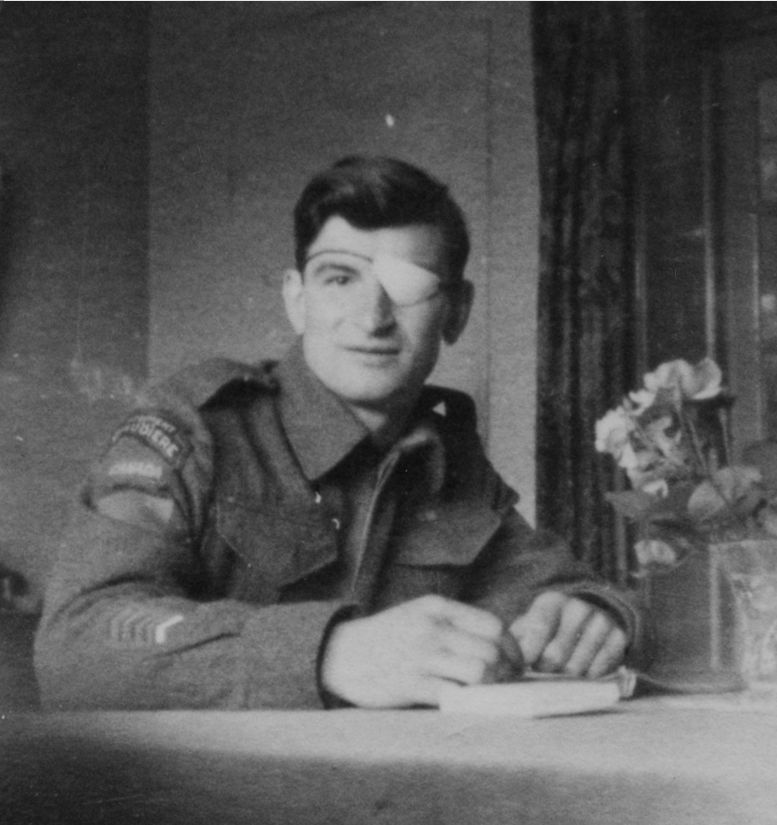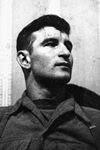Now It Can Be Told! - Tanks That Turn Night Into Local Day
The War Illustrated, Volume 9, No. 220, Page 470, November 23, 1945.
About three years before the war a new invention, consisting mainly of a special searchlight, was accepted by the War Office. It was later mounted into a tank turret and called, for security reasons, the Canal Defence Light. The inventors had succeeded in mounting inside the cramped confines of a tank turret a power unit capable of producing a light of several million candlepower. This was projected through a narrow slot and produced a flat beam of roughly fantail shape, which would cover a frontage of about 350 yards at a range of 1,000 yards.
The light could not be extinguished by small arms fire, although of course, it was a vulnerable to anti-tank devices as any other tank turret. And it had flicker devices which, the inventors claimed, would dazzle onlookers and might induce temporary blindness by causing paralysis of the eye's retina. The War Office bought this invention and set up a research and training establishment in Cumberland under the command of Col. R. S. Ollington, O.B.E., who was assisted by Mr. A.V. M. Mitzakis (until recently Technical Adviser to the Minister of Supply), and Mr. F. W. Hill, M.B.E., a specialist in searchlight construction.
Here was trained first the 11th Royal Tank Regiment and later the 35th Tank Brigade (Brig. H. T. de B. Lipscomb, R.T.R.), which consisted of the 49th Royal Tank Regiment, 152nd and 155th Regiments Royal Armoured Corps. Later, in the Middle East, the 1st Tank Brigade (Brig. T. R. Price, D.S.O., M.C., R.T.R.), consisting of the 11th and 42nd Royal Tank Regiments, was converted to C.D.L. and trained in the desert.
Crews Trained in Great Secrecy
Meanwhile, at home, the 35th Tank Brigade became part of 79th Armoured Division and in isolated parts of Cumberland, Northumberland and South Wales, the training of tank crews continued, first on specially converted Matildas and Churchills, later on American Grants. The training took place under conditions of great secrecy, and it is to the credit if the School and regiments concerned and of the local inhabitants that no word of its existence reached German ears.
During the months of training before D-Day it was found that some of the earlier claims had been a little extravagant, but that C.D.L. had two definite advantages worth exploiting. When C.D.L. tanks were used to light up a wide front they could turn night into local day and thus enable the pursuit of a defeated enemy to continue throughout the 24 hours. The aimed fire-power of the tanks themselves, even if not augmented by infantry, ordinary tanks and artillery, was impressive: direction-keeping on a night advance or assault was greatly facilitated and might prove decisive against an enemy on the run. Also they provided by night an improvement on the age-old adage of warfare, namely, attack with the sub behind you and in the eyes of your opponent.
Production of these special turrets continued in America and the U.K. American units were also trained, and both they and the 1st Tank Brigade – now consisting of the 11th, 42nd and 49th Royal Tank Regiments – went to the Continent shortly before the break-out from the Normandy bridge-head. That operation went so fast that it was not found possible to use C.D.L.
At a later stage, however, one squadron joined the ranks of 79th Armoured Division, and under the command of Major P. Gardner played a very useful role in the Rhine and Elbe crossings in protecting the bridges and ferries from floating mines and saboteurs. In the former they accounted for three enemy “Frogmen” and a considerable quantity of floating objects, including what was probably a midget submarine and a number of mines, intended to destroy the bridges over the Rhine so vital for reinforcement of our troops.
That is the story of C.D.L. to date. It has never been used in a mobile role against enemy, although, had the special tanks been available, definite opportunities for its use presented themselves during the break-out from the bridge-head south of Caen, during the pursuit through France, the canal crossings in Holland, the fighting in the Reichswald Forest and crossings of the Rhine and Elbe.
Previous and next article from Now It Can Be Told!
Now It Can Be Told! - Monty's D-Day Bluff Foxed the Germans
Hitler's High Command were deceived over the date of D-Day – June 6, 1944 – by the appearance of Field-Marshal Montgomery in the Mediterranean a few days before the invasion went in. He was receiv
Now It Can Be Told! - Navy's Little Ships Fought 780 Actions
At last the splendid record of the Royal Navy's M.T.B.s, M.G.B.s, and M.L.s can be revealed. During the war in Europe, Coastal Forces performed the following feats; fought 780 actions with the enemy a
Index
Previous article
Now It Can Be Told! - Monty's D-Day Bluff Foxed the Germans
Hitler's High Command were deceived over the date of D-Day – June 6, 1944 – by the appearance of Field-Marshal Montgomery in the Mediterranean a few days before the invasion went in. He was receiv
Next article
Now It Can Be Told! - Navy's Little Ships Fought 780 Actions
At last the splendid record of the Royal Navy's M.T.B.s, M.G.B.s, and M.L.s can be revealed. During the war in Europe, Coastal Forces performed the following feats; fought 780 actions with the enemy a





